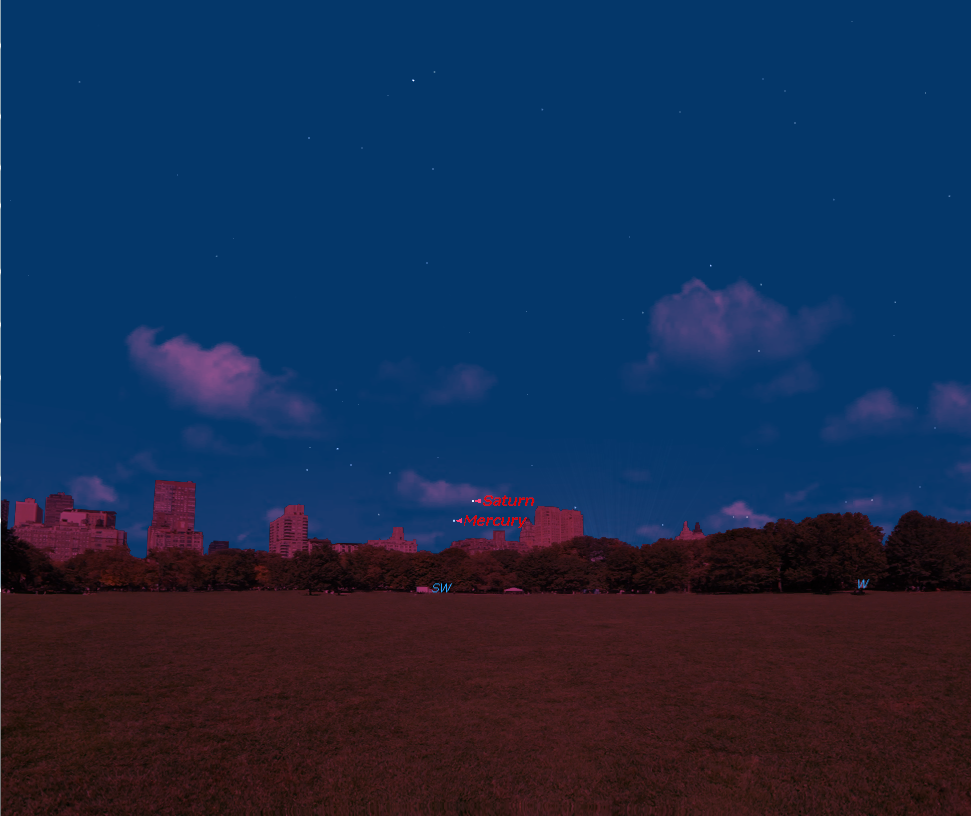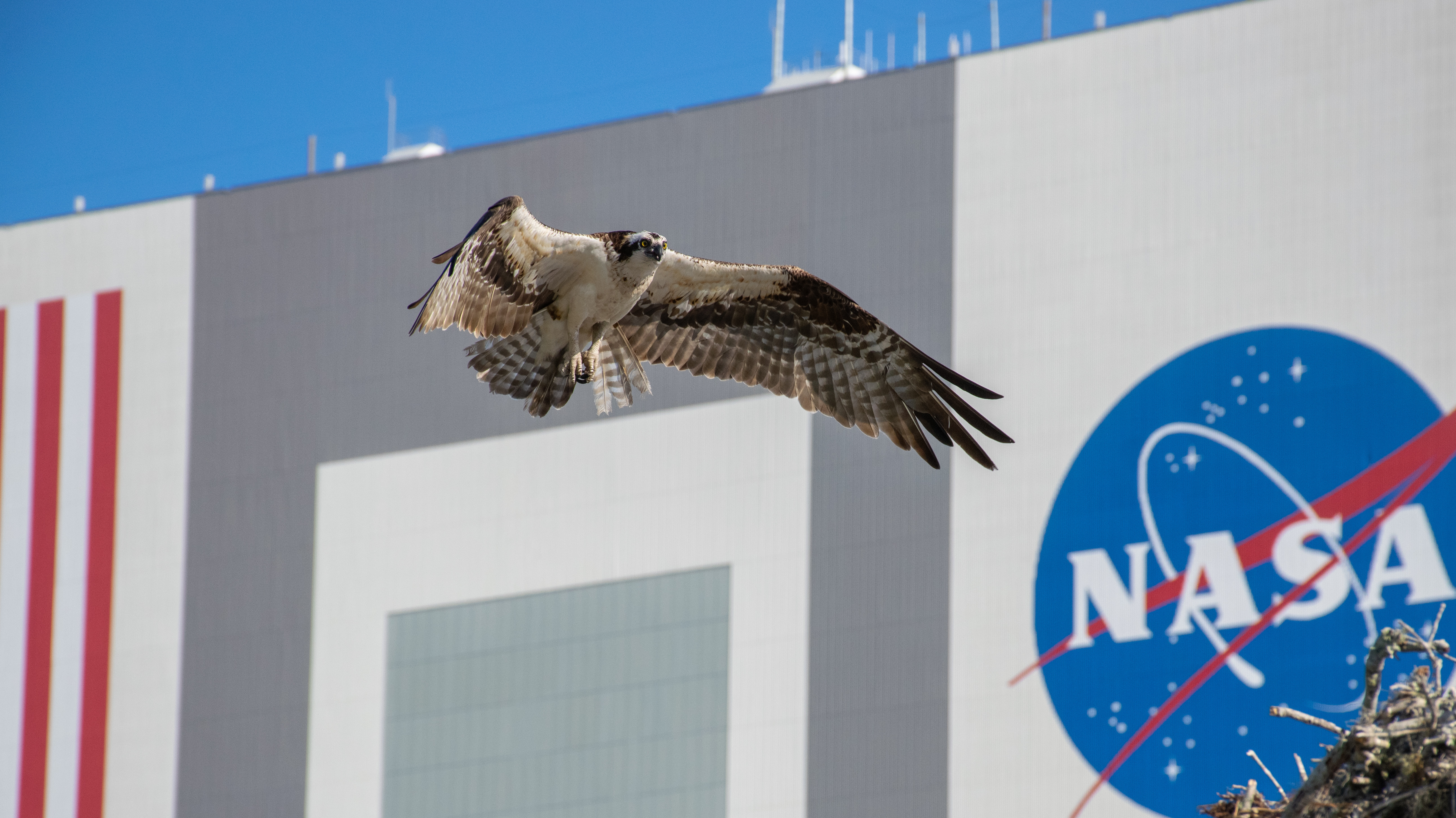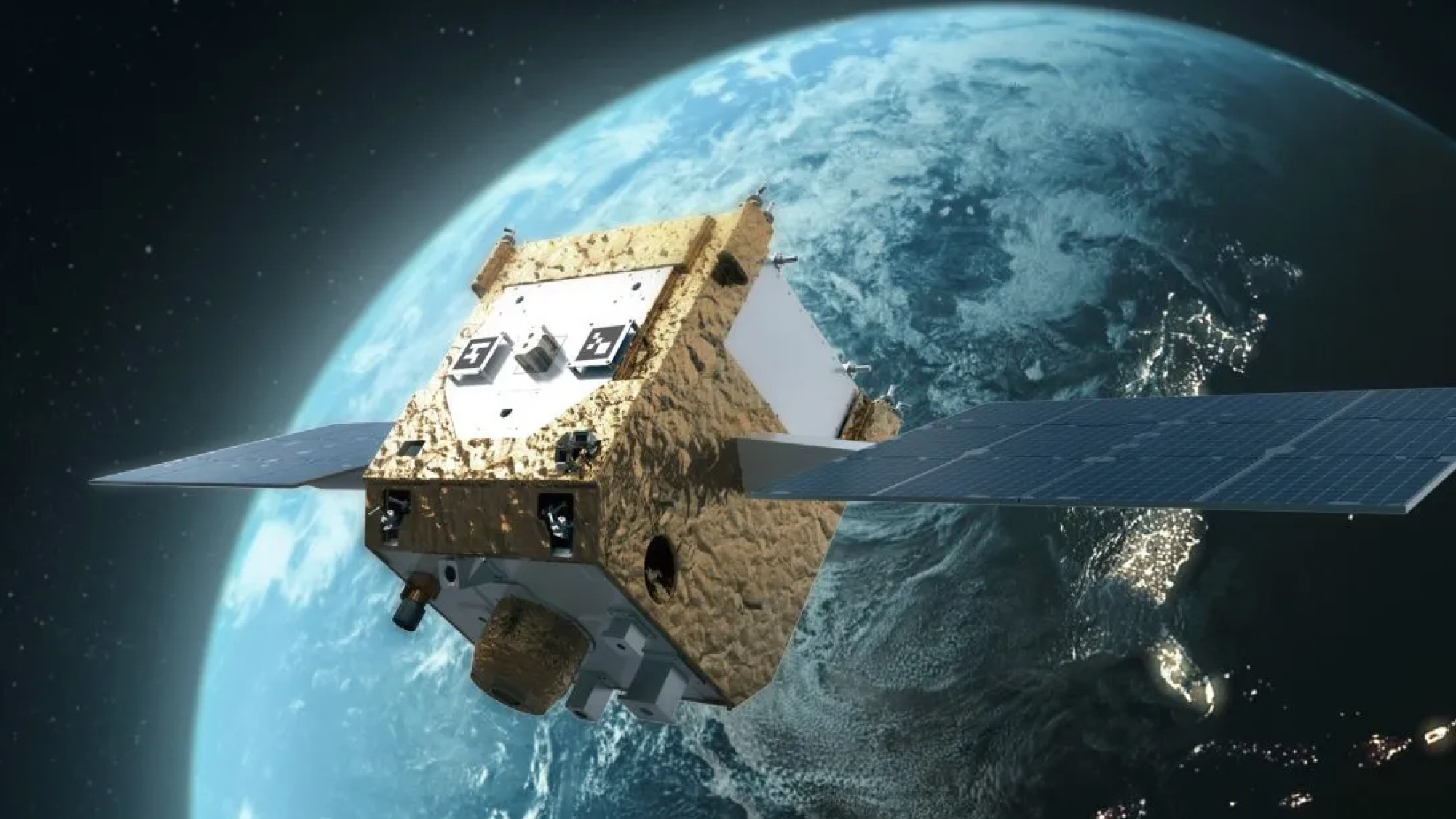See Mercury Meet Up with Saturn Tonight in the 1st of 3 Conjunctions

About half an hour after sunset tonight (Nov. 28), Mercury will shine close to Saturn in the early-evening sky for the first of three close approaches between the two planets.
Mercury and Saturn will shine about 3 degrees apart from each other low in the southeast; 3 degrees is about the width of your thumb held up toward the sky, according to an article on EarthSky.org. Mercury is about twice as bright as Saturn, and both planets should be visible through binoculars in the same field of view. So try that method if you can't discern both by eye. [The Brightest Planets in November's Sky]
The planets' approach marks the first of three conjunctions, or close approaches, of the two, which will get closer each time. On Dec. 6, Mercury will be less than 1.5 degrees away from Saturn, or about half the distance of this month's conjunction. Then, on Jan. 13, Mercury will be just 0.7 degrees from Saturn — about the width of a pinky finger held to the sky, according to EarthSky.org. While the Dec. 6 conjunction will be obscured by the glow of sunset, the Jan. 13 one will be visible in the morning sky below a waning crescent moon.
Mercury and Saturn may look close during this triple conjunction, but (of course) this is an illusion — the two planets will be separated by about 10 times the distance between Earth and the sun during all three of their close approaches, according to calculations by Wolfram Alpha.
Email Sarah Lewin at slewin@space.com or follow her @SarahExplains. Follow us @Spacedotcom, Facebook and Google+. Original article on Space.com.
Get the Space.com Newsletter
Breaking space news, the latest updates on rocket launches, skywatching events and more!
Join our Space Forums to keep talking space on the latest missions, night sky and more! And if you have a news tip, correction or comment, let us know at: community@space.com.

Sarah Lewin started writing for Space.com in June of 2015 as a Staff Writer and became Associate Editor in 2019 . Her work has been featured by Scientific American, IEEE Spectrum, Quanta Magazine, Wired, The Scientist, Science Friday and WGBH's Inside NOVA. Sarah has an MA from NYU's Science, Health and Environmental Reporting Program and an AB in mathematics from Brown University. When not writing, reading or thinking about space, Sarah enjoys musical theatre and mathematical papercraft. She is currently Assistant News Editor at Scientific American. You can follow her on Twitter @SarahExplains.









